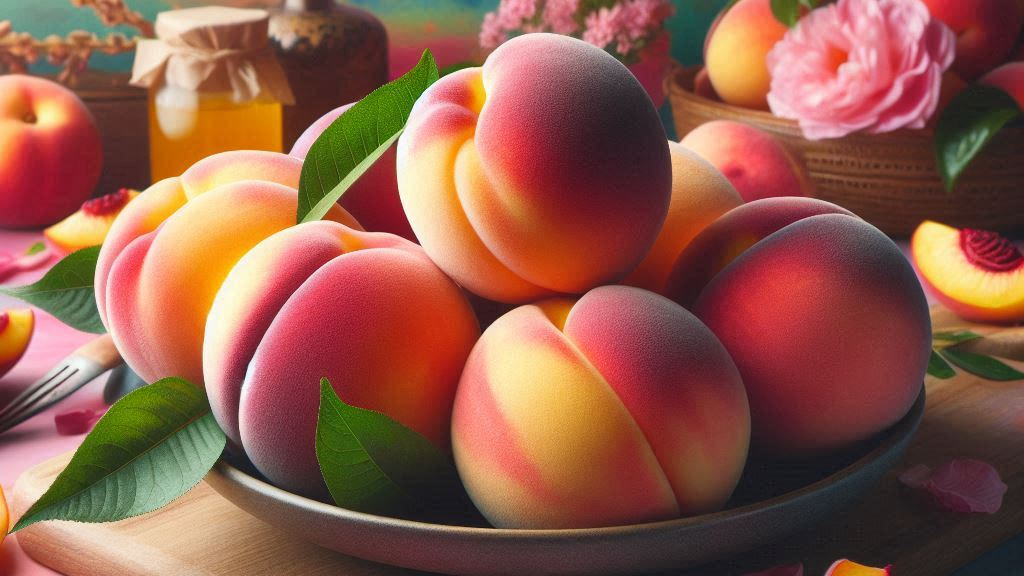
Jul 24, 2024 The Kakamas Peach: Transforming South Africa’s Canning Industry
Certain foods mark the various seasons of the year, such as mince pies at Christmas, hot cross buns at Easter, matzah at Passover, and harira at Ramadan. One is spoiled for choice in summer as local farmers’ markets sell various melons, vine-ripened tomatoes, fresh blackberries and sun-ripened peaches. For me, those tree-ripened peaches and nectarines were the extraordinary bounty marking the mid-summer months.
As a child, I would go with my father every Saturday morning to buy fruit and vegetables from our favorite farm stall in the suburbs of Cape Town. In the primary summer months, we always returned home with a tray of tree-ripened peaches (perhaps twenty or so) nestled in straw. Although the family consisted of only three people (my mother, father and myself), the tray would be empty by Tuesday. I still buy tree-ripened peaches from a local farm stall every mid-summer. No food beats the taste and aroma of a sun-warmed, ripe peach.
Hence, in this newsletter, we bring you the story of the Kakamas peach, the cannable peach. Kakamas is a small town with a population of around 10,000 people today. It is located on the banks of the Orange River in the Northern Cape Province in South Africa. The town receives only around four inches of rain annually and experiences sweltering summers and moderate winters with no frost. Local farmers can irrigate their fields with water from the Orange River and export table grapes, raisins, and dates to Europe. Kakamas also gave the world and South Africa’s fruit canning industry the Kakamas peach – a yellow-cling peach variety.
Our tale begins with Otto Reinecke, a deciduous fruit expert. He was one of a handful of high school graduates from South Africa sponsored to receive an overseas university education at the beginning of the 20th century. He obtained an agricultural degree in Canada in 1912 and ended up in the Faculty of Agriculture at the University of Stellenbosch in South Africa. While at Stellenbosch, he searched for a peach suitable for canning. The peaches in South Africa then had flesh that disintegrated during the canning process. His search eventually led to the discovery of a peach tree in the fruit orchard of a farm on the outskirts of Kakamas.
According to local centenarian Piet Van Rensburg, his father had asked him to plant seeds and tree cuttings collected in 1926. The following year, Van Rensburg planted an orchard of around forty-five peach trees. Most trees produced sour peaches, but six produced sweet peaches. One of those six produced beautiful and tasty fruit. This tree was well-known locally, and homemakers visited the orchard to pick fruit from it and make peach preserves.
When Reinecke started his search for a cannable peach, he wrote to colleagues across South Africa, including A.D. Collins, the local agriculture adviser in Kakamas. Reinecke had asked for ripe peach samples to be sent to Mr. Hugo of the Western Province Preserving Company, who canned all the samples received. Collins collected samples from the Van Rensburg orchard and sent them to Hugo. An “expert” panel of seven individuals tasted the canned samples, and five voted the Kakamas peach the best. Reinecke asked Collins to send him grafts from the tree. From 1934 to 1973, several million Kakamas and Kakamas daughter trees were distributed to fruit farms across South Africa, especially to the main deciduous fruit-growing regions in the Western Cape.
The Kakamas peach had an enormous impact on the fruit industry. In 1933, no canned peaches were exported from South Africa. But, by the 1970/71 peach harvesting season, South Africa exported 120,452 tons of canned peaches. Produce from the Kakamas peach contributed around half of this total export volume. A piece of the trunk of the original Kakamas Peachtree is on display at Stellenbosch University.
The origin of the Kakamas peach remains a mystery. Peaches originated in China, where the peach tree is considered the tree of life and symbolizes immortality and unity. In a 2014 book, Hazel Crampton suggests that the seeds for the Kakamas peach may have traveled from China and into Africa via various trade routes before ending up on the banks of the Orange River before the arrival of the Europeans in Kakamas.


